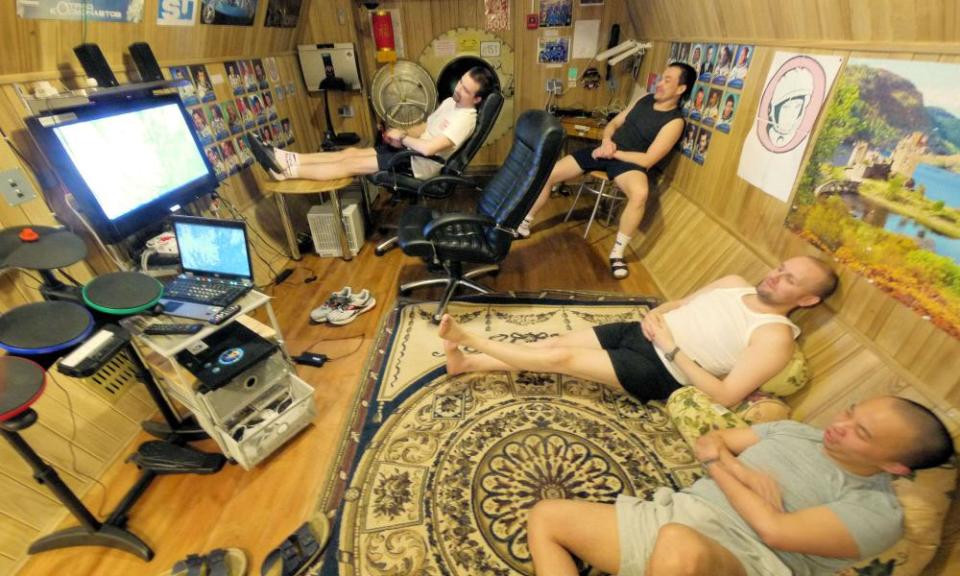'The enemy within': Mars crews could be at risk from onboard microbes – study

Of the many potential hazards astronauts might ponder on a trip to Mars, radiation poisoning, weightlessness and the foibles of crewmates might top the list.
But according to scientists, there’s another potential problem. Researchers examining a mocked-up spacecraft inhabited for 17 months by a six-man crew say parts of the capsule were rife with microbial life.
With previous research suggesting that the space environment could leave humans more susceptible to infection and make microbes more virulent and less responsive to antibiotics, researchers say the latest study highlights the importance of monitoring the bugs on board.
“We need to make sure that we know what kind of microorganisms are floating around or are on the surfaces and that can be transferred between the crew members, between the different habitats,” said Petra Schwendner, an astrobiologist from the University of Edinburgh and first author of the research.
The findings come from an analysis of data collected during the Mars500 project – a simulated mission to Mars which saw the six men spend 520 days cooped up inside a 180sq metre capsule in Moscow.
Run by the European Space Agency, Russia and China from June 2010 following two shorter experiments, the project was designed to look at the impact of a round trip to Mars on both the physical and psychological health of the crew – although it did not tackle potential problems from radiation or weightlessness.
Among the experiments carried out, once a month the so-called “Marsonauts” collected swabs and air samples from 20 locations inside the habitable regions of the capsule. Further samples were taken six months after the simulation ended.
Writing in the journal Microbiome, Schwendner and an international team of researchers describe how they cultivated colonies of microbes from the samples and used a variety of genetic analysis techniques to identify different species.
The results showed the capsule was teeming with microbes, with the module of the craft in which the men slept, ate and relaxed showing the greatest abundance both for surface and air samples.
Overall, microbial diversity within the capsule fell over time. While Schwendner said the reason for the drop was unclear, she added it underscores the importance of monitoring microbial communities during space missions. “You want to maintain a certain dynamic,” she said, adding that while the drop in diversity was not necessarily a problem, it could become one if only pathogens were left.
The researchers were also able to pinpoint microbial hotspots, including the external surface of the toilet and the tables in the individual cabins, which they say could prove valuable in spacecraft design, both in terms of human health and preventing damage to the capsule.
“[We can] use this information to make countermeasures – for example, we can now say maybe we should coat these surfaces with antimicrobial [materials],” said Schwendner.
But despite men often getting a bad rap when it comes to housework, the team say the study showed the cleaning regime was adequate. “We found that the habitat was maintained well,” said Schwendner. “At no point were we worried that basically there is a health-hazard caused by microorganisms.”
Kevin Fong, associate director of the Centre for Altitude, Space and Extreme environment medicine at University College London who was not involved in the study, said that while the microbes found within the capsules did not breach safety limits, the research probed a crucial aspect of crewed space missions.
“This is the enemy within,” he said. “The stuff you brought with you from Earth that would probably not be much of a problem were you within 20 minutes walk of a GP surgery or a half an hour’s drive from hospital. You realise how extreme this environment suddenly is – you have to think about everything you take for granted on Earth.”

